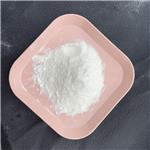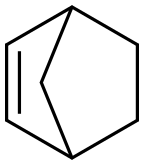Norbornene-Mediated Catalysis for Selective Functionalization and Polymerization
Catellani Reaction
In the late 1990s Catellani reported a remarkable palladium-catalyzed domino reaction in the presence of norbornene, in which aryl iodides were alkylated at the ortho positions by alkyl halides followed by a Mizoroki-Heck reaction to afford products of type 1 (Scheme 1 ). The process allowed for the construction of up to three carbon–carbon bonds in a single reaction using simple, commercially available starting materials. We called this process the Catellani reaction, and in the past decade considerable attention has been focused upon unlocking its synthetic potential. [1]

Norbornene Mediated ortho C-H Functionalization
The mechanism of the Catellani reaction revolves around the ability of norbornene to initiate a competitive reaction pathway and form a rigid catalyst scaffold which positions palladium in proximity to a C–H bond. The unique reactivity of norbornene is accompanied by a catalytic cycle involving multiple oxidation state transitions of palladium between(0), (II), and potentially (IV). The proposed mechanism for the Catellani reaction of an aryl iodide containing a pre-existing ortho functional group is shown in Scheme 2. Initial oxidative addition of palladium(0) into the mono-ortho-substituted aryl iodide(2) is followed by carbopalladation of norbornene(3) to give norbornylpalladium(II) intermediate 4. With no possibility of syn-β-hydride elimination, an electrophilic metalation at the ortho position occurs, followed by deprotonation and rearomatization to form palladacycle 5. This palladium(II) complex can then undergo reaction with alkyl or aryl halides to form palladium(IV) complex 6 . Reductive elimination forms the ortho C–C bond and generates norbornyl palladium(II) intermediate7 (if there is no pre-existing ortho substituent, the cycle repeats to alkylate the other ortho position). With both ortho positions substituted, extrusion of norbornene via de-carbopalladation (β-carbon elimination) is favored due to the increased steric strain of 7, to form arylpalladium(II) species 8, which can then undergo a traditional palladium catalyzed coupling reaction to yield the desired product 9 and regenerate the palladium(0) catalyst. [1]

Ring-Opening Polymerization of Norborene
Careful design of isolable, well-characterized catalysts is the key to the preparation of living polymers and ultimately well-defined block copolymers by ring-opening metathesis polymerization of cyclic olefins. This has been demonstrated recently in the ring-opening polymerization of norbornene by a titanacyclobutane/titanium carbine complex and by a related tantalum catalyst. These living polymer systems produce monodispersed polymer. The utility of the Ti polymerization catalyst in polymer synthesis has been demonstrated by the production of A-B-A triblock polymer. Tungsten metathesis catalysts have recently been reported that are much more active than the titanium catalysts and show a greater tolerance of polar functional group. One of these has been shown to produce a growing alkylidene in the polymerization of norbornene. [2]
Pd/Norbornene Cooperative Catalysis
Direct C–H bond activation is an important reaction in synthetic organic chemistry. This methodology has the potential to simplify reactions by avoiding the use of prefunctionalized reagents. However, selectivity, especially site selectivity, remains challenging. A synthetic methodology that combines selective C−H bond activation with sequential reactions isdiscovered. This procedure, which is now known as the “Catellani reaction”, enables the selective functionalization of both theortho and ipso positions of aryl halides. The desired molecules are obtained with high selectivity from a pool of simple precursors. These molecules are assembled under the control of a palladacycle, which is formed through the joint action of a metal (Pd) and an olefin such as norbornene. These two species act cooperatively with an aryl halide to construct the palladacycle, which is formed through ortho-C−H activation of the original aryl halide. The resulting complex acts as a scaffold to direct the reaction (via Pd(IV)) of other species, such as alkyl or aryl halides and amination or acylation agents, toward the sp2 C−Pd bond. At the end of this process, because of steric hindrance, the scaffold is dismantled by norbornene extrusion. Pd(0) is cleaved from the organic product through C−C, C−H, C−N, C−O, or C−B coupling, in agreement with the well-known reactivity of aryl-Pd complexes. The cycle involves Pd(0), Pd(II), and Pd(IV) species. [3]
References:
[1] Martins, A., Mariampillai, B., & Lautens, M. (2009). Synthesis in the key of Catellani: norbornene-mediated ortho C–H functionalization. CH Activation, 1-33.
[2] Schrock, R. R., Feldman, J., Cannizzo, L. F., & Grubbs, R. H. (1987). Ring-opening polymerization of norbornene by a living tungsten alkylidene complex. Macromolecules, 20(5), 1169-1172.
[3] Della Ca, N., Fontana, M., Motti, E., & Catellani, M. (2016). Pd/Norbornene: a winning combination for selective aromatic functionalization via C–H bond activation. Accounts of Chemical Research, 49(7), 1389-1400.
You may like
Lastest Price from Norbornene manufacturers

US $10.00/KG2025-04-21
- CAS:
- 498-66-8
- Min. Order:
- 100KG
- Purity:
- 99%
- Supply Ability:
- 100 mt

US $0.00/KG2025-04-15
- CAS:
- 498-66-8
- Min. Order:
- 1KG
- Purity:
- 99%
- Supply Ability:
- 500000kg


